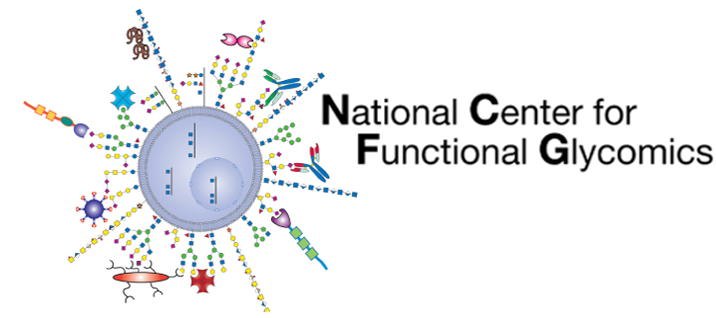By: Richard D. Cummings
One of the smallest known naturally-occurring glycoprotein in mammals is likely to be CD24, also known as nectadrin. Although it behaves in analyses as a 23-60 kDa glycoprotein, the glycoprotein from mice has only 27 amino acids (human protein has 30 amino acids) (1-3). Although tiny, it has a GPI-anchor at its C-terminus, three potential sites for N-glycosylation, and several sites for O-glycosylation. Many, many dozens of different glycans are present, indicating that this tiny glycoprotein also has perhaps the greatest diversity of glycoforms for any glycoprotein its size (4).
The largest glycoprotein in mammals is probably MUC16, a mucin of ~22,000 amino acids (5,6) and over 50% of its mass is carbohydrate (6), but little is known about the repertoire of O-glycans on the natural molecule. Interestingly, assuming 3.5 Å per amino acid, so a 10 amino acid linear chain would be 3.5 nm approximately, this 20,000 amino acid protein might be at least 70 microns in length. That is an amazing size, as the typical epithelial cell diameter is ~15 microns; thus, a MUC16 molecule could presumably wrap around the cell several times. How it enters and exits the Golgi apparatus where it is glycosylated, an organelle of ~2 microns in many cells, is a mystery!
References:
- Kay, R., Takei, F., and Humphries, R. K. (1990) Expression cloning of a cDNA encoding M1/69-J11d heat-stable antigens. J Immunol 145, 1952-1959
- Kadmon, G., von Bohlen und Halbach, F., Horstkorte, R., Eckert, M., Altevogt, P., and Schachner, M. (1995) Evidence for cis interaction and cooperative signalling by the heat-stable antigen nectadrin (murine CD24) and the cell adhesion molecule L1 in neurons. Eur J Neurosci 7, 993-1004
- Kristiansen, G., Machado, E., Bretz, N., Rupp, C., Winzer, K. J., Konig, A. K., Moldenhauer, G., Marme, F., Costa, J., and Altevogt, P. (2010) Molecular and clinical dissection of CD24 antibody specificity by a comprehensive comparative analysis. Lab Invest 90, 1102-1116
- Bleckmann, C., Geyer, H., Reinhold, V., Lieberoth, A., Schachner, M., Kleene, R., and Geyer, R. (2009) Glycomic analysis of N-linked carbohydrate epitopes from CD24 of mouse brain. J Proteome Res 8, 567-582
- Higuchi, T., Orita, T., Nakanishi, S., Katsuya, K., Watanabe, H., Yamasaki, Y., Waga, I., Nanayama, T., Yamamoto, Y., Munger, W., Sun, H. W., Falk, R. J., Jennette, J. C., Alcorta, D. A., Li, H., Yamamoto, T., Saito, Y., and Nakamura, M. (2004) Molecular cloning, genomic structure, and expression analysis of MUC20, a novel mucin protein, up-regulated in injured kidney. The Journal of biological chemistry 279, 1968-1979
- Lloyd, K. O., Yin, B. W., and Kudryashov, V. (1997) Isolation and characterization of ovarian cancer antigen CA 125 using a new monoclonal antibody (VK-8): identification as a mucin-type molecule. Int J Cancer 71, 842-850
